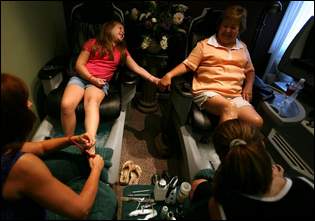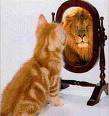 I recently wrote the following response to APS Observer Forum criticism, “Not So Situational,” June/July 2007. This response is also published on LuciferEffect. com, the official website of The Lucifer Effect: Understanding How Good People Turn Evil (Random House, 2007).
I recently wrote the following response to APS Observer Forum criticism, “Not So Situational,” June/July 2007. This response is also published on LuciferEffect. com, the official website of The Lucifer Effect: Understanding How Good People Turn Evil (Random House, 2007).
* * *
Personal criticism has been leveled against me as representing an excessive “situationist” perspective by 43 psychologists and 6 of their graduate student signatories in a letter to Observer Forum, June/July 2007. (Even more have signed on to this bandwagon on Internet list serves.) They report: “We are concerned by the message that has been conveyed to the general public regarding the power of the situation to ‘trump individual dispositions.’” That statement was never made by me, nor was the other extreme characterization that was mis-attributed to me by the author of the APS review of my book. It is his conclusion that is objectionable not only to personality psychologists, but to me even more so. The personal attack by my distinguished colleagues is based upon the summary statement in that book review which stated: “The main argument in The Lucifer Effect is that there are no bad apples, only bad barrels. That is Zimbardo’s metaphor for the power of the situation to trump individual differences.” (Wray, 2007, p. 11)
It is the reviewer who has over-simplified and distorted the set of arguments in my book, where I make evident that there are indeed some people whose extended careers as evil-doers qualify them as “evil people,” or “bad apples,” such as Hitler, Stalin, Pol Pot, Idi Amin, serial killers, and others. However, many people who engage in actions that could be deemed evil are more likely to be ordinary people caught up in behavioral contexts that are unfamiliar, and in which their habitual response patterns and moral judgments become “disengaged.” In addition, I never said: “situations trump individual differences.” “Trump” is a term that I rarely use, in fact, used only once in more than 500 pages in my book, The Lucifer Effect. My only use of “trumps” was in discussing the “banality of evil” in Nazi concentration camps. Sociologist John Steiner, an Auschwitz survivor, described, “how roles can trump character traits” of the Nazi guards. He reports, “that not everyone playing a brutal role has to have sadistic traits of character. Those who continued in roles originally not conducive to their personality often changed their values (i.e., had a tendency to adjust to what was expected of them in their roles).” (Lucifer, p. 287)
500 pages in my book, The Lucifer Effect. My only use of “trumps” was in discussing the “banality of evil” in Nazi concentration camps. Sociologist John Steiner, an Auschwitz survivor, described, “how roles can trump character traits” of the Nazi guards. He reports, “that not everyone playing a brutal role has to have sadistic traits of character. Those who continued in roles originally not conducive to their personality often changed their values (i.e., had a tendency to adjust to what was expected of them in their roles).” (Lucifer, p. 287)
Most psychologists who have actually read my newest book, The Lucifer Effect: Understanding How Good People Turn Evil (2007) will readily identify my research orientation as that of a “social interactionist.” Social psychologists, like myself, follow the Lewinian tradition of studying individual and group behavior in situational-social contexts (See Ross & Nisbett, 1991). We do so because as I say up front, “People and situations are usually in a state of dynamic interaction.” (Lucifer, p. 8) I go on to define these concepts as follows: “The Person is an actor on the stage of life whose behavioral freedom is informed by his or her makeup–genetic, biological, physical, and psychological. The Situation is the behavioral context that has the power, through its reward and normative functions, to give meaning and identity to the actor’s roles and status.” (Lucifer, p. 445)
A major task of psychological science is to explain behavioral variance, often by determining the extent to which observed behavior can be attributed to internal variables, such as individual differences, to external situation-based variables, and to their interaction. A major difference between personality and social psychologists lies primarily in their emphasis on dispositional versus situational variables; rarely do they disagree on endorsing the inevitable interaction between them. But more psychologists give lip service to being interactionists than those whose research actually gathers both dispositional and situational evidence. The central issue for social psychologists is not the relative predictive power of person versus situation, rather it is the typical underestimation of situational factors and “channel factors” that lead laypeople, social scientists, policy makers, and criminal justice personnel to make erroneous predictions and misattributions of behavior whenever such external factors are operating in substantial ways.
Although I am most known for my social psychological research, I have long been engaged as well in studying both personality and individual difference contributions to a variety of behavioral outcomes. My pioneering research on shyness in adults helped to understand individual differences within cultural, familial, and school contexts in its causes, correlates, and consequences, and in the treatment  strategies that Lynne Henderson and I developed and effectively utilized in our Shyness Clinic. (See http://www.shyness.com) Research with Jack Hilgard established the hypnotizability construct as one of psychology’s most reliable individual difference measures, with a 25-year test-retest correlation of .71. (Picione, Hilgard, & Zimbardo, 1989). Similarly, the most reliable and valid measure of individual differences in time perspective is found in the scale I developed, the Zimbardo Time Perspective Inventory. (Zimbardo & Boyd, 1999) A decade’s long research program on personality and politics (using the BFQ) with my Italian colleague, Gian Vittorio Caprara, always focused on the interplay of personality traits and values with political perceptions and preferences. (Caprara & Zimbardo, 2004) Finally, recent research with Al Bandura explored the role of self-efficacy in understanding the social dynamics associated with those on prison execution teams. (Osofsky, Bandura & Zimbardo, 2005)
strategies that Lynne Henderson and I developed and effectively utilized in our Shyness Clinic. (See http://www.shyness.com) Research with Jack Hilgard established the hypnotizability construct as one of psychology’s most reliable individual difference measures, with a 25-year test-retest correlation of .71. (Picione, Hilgard, & Zimbardo, 1989). Similarly, the most reliable and valid measure of individual differences in time perspective is found in the scale I developed, the Zimbardo Time Perspective Inventory. (Zimbardo & Boyd, 1999) A decade’s long research program on personality and politics (using the BFQ) with my Italian colleague, Gian Vittorio Caprara, always focused on the interplay of personality traits and values with political perceptions and preferences. (Caprara & Zimbardo, 2004) Finally, recent research with Al Bandura explored the role of self-efficacy in understanding the social dynamics associated with those on prison execution teams. (Osofsky, Bandura & Zimbardo, 2005)
Before turning to the criticism that is most personally distressing regarding understanding of the Abu Ghraib abuses, it is important to mention that while personality and social psychologists spar about the relative contributions of dispositions and situations, we have ignored the most significant factor in the behavioral equation–the System. “The System consists of those agents and agencies whose ideology, values, and power create situations and dictate the roles and expectations for approved behaviors of actors within its spheres of influence. “Bad Systems” create “Bad Situations” create “Bad Apples” create “Bad Behaviors,” even in good people. (Lucifer, p. 445-6) It is not possible to really understand what happened at Abu Ghraib without a comprehensive appreciation of the influences of the Military and Civilian chain of command operating top-down in that prison and other detention centers that were created as part of the “war on terror.” When understanding complex behavior in the real world, beyond our laboratories or classroom surveys and personality scale data collection, it is essential to begin with a systems level top-down analysis because that is where the real power lies. Such understanding gives us the necessity leverage to develop public health paradigms designed to change unacceptable situations as well as the perpetrators of evil functioning in those situations (See Haney & Zimbardo, In press).
Finally, my critics assert: “Our concern is that Dr. Zimbardo has misrepresented the scientific evidence in an attempt to offer a purely situational account of the antisocial acts perpetrated at Abu Ghraib.” What seems like a “situation-only” analysis by me and other social psychologists, is always a counter-reaction and our attempt at a counter-balance to the “rush to the dispositional” by authorities, lay people, and too many other psychologists who have adopted an entirely individualistic perspective. We believe that the significance of situational-environmental-context variables has been under-appreciated by our colleagues as well as the legal system. The dispositional approach ends by blaming the perpetrators for wrongdoing without sufficiently considering the situational dynamics that were in operation at the time, exerting powerful influences that can be transformative in modifying the behavior of ordinary, even good persons. It is always the tactic of the System in any scandal to blame the grunts, to pick out the few “bad apples,” thereby deflecting attention away from its complicity, and the need to change corrupt systems not merely to punish its operatives– the G. I. Joes. I tried to counter the dispositional allegation by the Military and Bush Administration spokespeople that the abusers were just “a few rogue soldiers,” or “ a few bad apples.” Instead, I offered the hypothesis that maybe they were initially “good apples” who were corrupted by the “bad barrel” in which they were forced to function—in that prison dungeon in that war zone operating under a new definition of prisoners of the war on terror that excluded those detainees from the traditional safeguards against torture.
 I have become an expert on the conditions that existed in Abu Ghraib Prison, Tier 1A and B, where the abuses occurred, and document my extensive research about the people, place, and system associated with those crimes against humanity in two detailed chapters of Lucifer. As expert witness for the Staff Sergeant in charge of those Army Reserve MPs, I reviewed all of the available investigative reports, all of the photos and videos, arranged for psychometric evaluations, did in-depth interviews with him as well as a member of the abuse investigating team, and with a senior military officer sent to repair and prevent such damages, and more. A Colonel and also the General who did the most thorough investigation of the abuses also reviewed my conclusions. Thus, my conclusions are not abstract conceptual ones as these critics assert, rather they are based on the best available evidence that highlights the role of a set of specific environmental risk factors combined with a set of systemic factors in contributing to these abuses.
I have become an expert on the conditions that existed in Abu Ghraib Prison, Tier 1A and B, where the abuses occurred, and document my extensive research about the people, place, and system associated with those crimes against humanity in two detailed chapters of Lucifer. As expert witness for the Staff Sergeant in charge of those Army Reserve MPs, I reviewed all of the available investigative reports, all of the photos and videos, arranged for psychometric evaluations, did in-depth interviews with him as well as a member of the abuse investigating team, and with a senior military officer sent to repair and prevent such damages, and more. A Colonel and also the General who did the most thorough investigation of the abuses also reviewed my conclusions. Thus, my conclusions are not abstract conceptual ones as these critics assert, rather they are based on the best available evidence that highlights the role of a set of specific environmental risk factors combined with a set of systemic factors in contributing to these abuses.
“As one of the senior Criminal Investigation Division agents who saw conditions at Abu Ghraib first hand, it is clear to me that Phil Zimbardo truly understands all the factors that come into play there.” (Marcia Drewry, retired USA DISC special agent, 2007, Lucifer Effect endorsement)
One of the investigations into the causes of the abuses was conducted by Generals George Fay and Anthony Jones They identify six of seven contributing factors to the abuses as traceable to systemic or situational factors, and but one to dispositional factors. Their report then proceeds to expand on this overview by highlighting numerous systemic failures that played key roles in facilitating the abuses. They conclude: “Looking beyond personal responsibility, leader responsibility and command responsibility, systemic problems and issues also contributed to the volatile environment in which abuse occurred. The report lists several dozen specific systemic failures ranging from doctrine and policy concerns to leadership and command and control issues to resource and training issues.” (Lucifer, p. 393)
General Antonio Taguba has written me: “I received your book this weekend. From a glance, you have done such an in depth analysis which I think is difficult to refute.” And in addition: “Phil…You’ve certainly have done a magnificent job in your factual research.” (Personal email communication, July 12, 2007)
A committee headed by James Schlesinger, former Secretary of Defense, led another investigation into the Abu Ghraib abuses. The Schlesinger Report boldly proclaims that the “landmark Stanford study provides a cautionary tale for all military detention operations.” It notes, “The potential for abusive treatment of detainees during the Global War on Terrorism was entirely predictable based on a fundamental understanding of social psychology principles coupled with an awareness of numerous known environmental risk factors…. Findings from the field of social psychology suggest that the conditions of war and the dynamics of detainee operations carry inherent risks for human mistreatment, and therefore must be approached with great caution and careful planning and training.” Their report continues, “Psychologists have attempted to understand how and why individuals and groups who usually act humanely can sometimes act otherwise in certain circumstances.” Among the concepts outlined to help explain why abusive behaviors occur among ordinarily humane individuals are the following: deindividuation; dehumanization; enemy image; groupthink; moral disengagement; social facilitation, and other environmental factors. (See Lucifer, p. 402, and Notes to source of the original document)
Over and above such focus on “environmental factors,” I still make explicit that any analysis of complex human behavior demands a tri-part focus. “What I learned from the SPE [Stanford Prison Experiment] paradigm about investigating institutional abuses is the need to evaluate various factors (dispositional, situational and systemic) that lead to the behavioral outcomes we want to understand.” (Lucifer, p. 330)
In conclusion, I hope that a careful reading of what I actually say in The Lucifer Effect, and not merely the allegations of its book reviewer, or unsubstantiated rumors, will defuse some of the alarm that these colleagues have about my messages going out to the general public. But regardless, I will continue my life-long mission of trying to give to the American and International public what I consider to be sound psychological science through my text books and trade books, my PBS-TV series, Discovering Psychology, informative web sites (www.psychologymatters.org; http://www.prisonexp.org; http://www.luciferEffect.com), media interviews, and my public lectures.
[A condensed version of this reply will appear in the September issue of the APS Observer. Please note that I do not have the time nor the inclination to enter into any further discussion or debate about this matter.]
* * *
References
Caprara, G. V., & Zimbardo, P. G. (2004). Personalizing politics: A congruency model of political preference. American Psychologist, 59, 581-594.
Haney, C., & Zimbardo, P. G. (In press). Persistent Dispositionalism in Interactionist Clothing: Fundamental Attribution Error in Explaining Prison Abuse. Personality and Social Psychological Bulletin.
Osofsky, M. J., Bandura, A., & Zimbardo, P.G. (2005) The Role of Moral Disengagement in the Execution Process. Law and Human Behavior, 29, 371-393.
Piccione, C., Hilgard, E. R., & Zimbardo, P. G. (1989). On the degree of stability of measured hypnotizability over a 25-year period. Journal of Personality and Social Psychology, 56, 289-295.
Ross, L., & Nisbett, R. (1991). The Person and the Situation: Perspectives on Social Psychology. Boston, MA: McGraw-Hill.
Wray, H. (2007, June/July). The banality of evil. APS Observer, p. 11.
Zimbardo, P. G. (2007). The Lucifer Effect: Understanding How Good People Turn Evil. New York: Random House.
Zimbardo, P. G., & Boyd, J. N. (1999). Putting time in perspective: A valid, reliable individual-differences metric. Journal of Personality and Social Psychology, 77, 1271-1288.


















 Body language is a bigger factor in communication than most people realize. If you don’t agree, try looking away from someone as they are trying to talk to you. Or ask anyone who is trained in interrogation; they will tell you that a person’s face and hand gestures give away more than their words. Throughout our life, we pick up this body language as much as we pick up our spoken language, though the reading of body language is on a much more subliminal level.
Body language is a bigger factor in communication than most people realize. If you don’t agree, try looking away from someone as they are trying to talk to you. Or ask anyone who is trained in interrogation; they will tell you that a person’s face and hand gestures give away more than their words. Throughout our life, we pick up this body language as much as we pick up our spoken language, though the reading of body language is on a much more subliminal level.








 According to the old expression, one bad apple can spoil the bunch. But people aren’t apples. If they were, there would be another expression: a barrel of good apples can sometimes revive a rotten one.
According to the old expression, one bad apple can spoil the bunch. But people aren’t apples. If they were, there would be another expression: a barrel of good apples can sometimes revive a rotten one. 


 It’s standard advice: if you want to be something, act like you already are. Smile if you are sad, and you just might turn that frown upside down (
It’s standard advice: if you want to be something, act like you already are. Smile if you are sad, and you just might turn that frown upside down (
 The theater setting supported this process by putting the youth in situations in which emotions were likely to occur because the expectation of hard work created stress and tension. Moreover, intense emotions were accepted and discussed openly with a climate of concern for others. The adults and youth alike stated shared beliefs about the importance of emotional experience, and the adolescents drew on the models and ideas of the culture as they learned about the dynamics of emotions in themselves and in groups.
The theater setting supported this process by putting the youth in situations in which emotions were likely to occur because the expectation of hard work created stress and tension. Moreover, intense emotions were accepted and discussed openly with a climate of concern for others. The adults and youth alike stated shared beliefs about the importance of emotional experience, and the adolescents drew on the models and ideas of the culture as they learned about the dynamics of emotions in themselves and in groups.


 They’re the kids who every parent loves to hate. The childhood delinquents. The ones whom you hope your kids never start hanging out with, much less become. For whatever reason, they fell through the cracks and and seem destined for tribulation. They do poorly in school, get into fights, shirk the rules, and end up on the wrong side of the law. They “live fast and die young.”
They’re the kids who every parent loves to hate. The childhood delinquents. The ones whom you hope your kids never start hanging out with, much less become. For whatever reason, they fell through the cracks and and seem destined for tribulation. They do poorly in school, get into fights, shirk the rules, and end up on the wrong side of the law. They “live fast and die young.” 




























 Children in families are often labeled, such as the “brainy one” or the one with the best personality or the athletic one. Those labels clearly influence the behavior of the child labeled as well as those around him or her. But what happens when the child becomes an adult–does the label still matter?
Children in families are often labeled, such as the “brainy one” or the one with the best personality or the athletic one. Those labels clearly influence the behavior of the child labeled as well as those around him or her. But what happens when the child becomes an adult–does the label still matter? 

 In February, we examined the “
In February, we examined the “
 Fry was caught in a classic Facebook double bind – he did not want to offend people by rejecting their requests but knew that accepting all invitations would render his membership useless. Facebook works by giving users updates on their friends’ activities. If that list of friends expands by 20 an hour, interesting updates will be lost in an ocean of small-talk.
Fry was caught in a classic Facebook double bind – he did not want to offend people by rejecting their requests but knew that accepting all invitations would render his membership useless. Facebook works by giving users updates on their friends’ activities. If that list of friends expands by 20 an hour, interesting updates will be lost in an ocean of small-talk. We have examined sports fandom at various times on The Situationist, including “
We have examined sports fandom at various times on The Situationist, including “ Whatever, hardcore fans clearly relish the badge of identification that ties them to their teams and to fellow fans, their “tribe.”
Whatever, hardcore fans clearly relish the badge of identification that ties them to their teams and to fellow fans, their “tribe.”